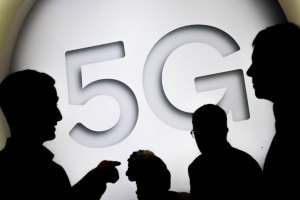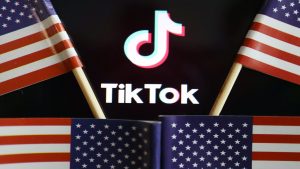Bridging the chasm: How technology promises to shape the future

KV Prasad Jun 13, 2022, 06:35 AM IST (Published)
 Listen to the Article (6 Minutes)
Listen to the Article (6 Minutes)
Summary
Technology has not only proliferated our daily lives but has become an inherent part of every decision that is being made. The American Broadcasting Corporation (ABC) aired a show about a family that lives in a futuristic megacity, with flying cars, smart homes, an automated workforce, virtual reality, and a wide range of intelligent living solutions. Fast forward 60 years, the life of The Jetsons seems fairly normal, says Rajaneesh R Kini of Cyient.
The year was 1962, and television audiences had a glimpse into an aspirational look into the future. The American Broadcasting Corporation (ABC) aired a show about a family that lives in a futuristic megacity, with flying cars, smart homes, an automated workforce, virtual reality, and a wide range of intelligent living solutions. Fast forward 60 years, the life of The Jetsons seems fairly normal. Technology has not only proliferated our daily lives but has become an inherent part of every decision that is being made. And here’s how.
The age of The Jetsons is here
Technology is not just constructing the future from a blueprint; it is orchestrating it. In 2019, nearly 57 percent of homes in Britain and 69 percent of US households contained at least one smart home device. The consumer-centric adoption of technology is scaling rampantly, with predictions estimating that there will be nearly 478.2 million smart homes in the world by 2025.
Also Read | Explained: How TikTok algorithm is designed to get young users addicted
Imagine a scenario where a person has had a fall. Their smartwatch notifies the nearest ambulance of the mishap. As the patient is being wheeled into the ambulance, medical teams are alerted within a nearby health system and are able to prepare standby teams to begin care delivery. The ambulance is able to communicate with the city grid, instantly providing them green light clearance across all traffic systems. As the patient is being wheeled into the hospital, NFC or RFID is able to help the hospital retrieve all patient data across their EHR systems and obtain necessary payer authorisations. The patient needs immediate surgery; however, a standby surgeon is unavailable. Remote tools allow a surgeon from another hospital or city to perform the precision surgery. While the patient regains mobility, he is still able to remotely go to work and attend all meetings, providing a semblance of normalcy with minimal disruption to his lifestyle.
We are not far from this reality. In fact, we are much closer to this possibility than we were 36 months ago. With the integration of smart technology in our homes, workplaces, infrastructure, healthcare, and other industries, there is a great likelihood that an average person could interact with a smart device every 10 seconds.
Also Read | Dangerous liaisons? How dating apps use/misuse your data
It is what the new world looks like. But many ask, what is the new world?
Navigating the “NEW” world
Our future is a combination of three worlds. The new normal, where COVID and other factors have forced people to circumnavigate the conventions of how everyday engagements take place. New physical worlds are gaining mass interest with the predominance of SPACE X, Blue Origin and Virgin Galactic that promise setting up life in outer space or Mars. Or new virtual worlds, such as Facebook’s Metaverse and NVIDIA’s Omniverse, are challenging the boundaries of physical interaction, providing virtual spaces for engagement and collaboration.
The intersection of these new worlds is ushering in megatrends that will reshape the course of how technology and society will engage with each other. If you look at them broadly, the megatrends can be categorised into three categories, the fabric of which will impact every aspect of our daily touchpoints:
Human lives: Across education, healthcare, lifestyle, or wellbeing, intelligent devices are collecting a vast amount of information to play a pivotal role in preventive safety and the wellbeing of human lives. Today, a simple search on YouTube will deliver hundreds of videos that showcase how Tesla has pioneered their crash prevention technology. Similarly, at a more personal level, Apple’s in-built ECG and fall detection are already demonstrating examples of proactive intervention and saving people’s lives. Improving human lives will also transcend into their everyday work by finding the balance between virtual and physical work. Earlier this year, Nvidia launched Clara™ Holoscan, an AI computing platform for medical devices that enables medical device developers to create and take to market the next generation of AI-enabled medical devices. Facebook and Microsoft glasses like Oculus and HoloLens are already being used in key medical technology applications, from the design of medical tools to surgical procedures. Well-being digital twin (WDT) is now a partial reality and will become an essential tool for personnel health very soon once we have enough and more data from wearables and health records.
Human work: The way we work will change. Whether it is the humanoid robots by Boston Dynamics, Amazon’s freight robots, or the delivery drones by Dominos, the need for humans to engage in physical labour will soon be mitigated, allowing us to focus on outcomes that truly matter. At the software end of the spectrum, RPA and AI are evolving in order to not just perform rule-based workflows but also take prescriptive actions that deliver favourable outcomes. Organisations like NXP Semiconductors and their OPTIMUM project have made huge strides in smart manufacturing with intelligent material handling and context awareness to optimise manufacturing processes and increase their efficiency. A month ago, Nvidia revealed its plan to build Earth 2, a supercomputer tasked with creating a global 3D metaverse simulation of the Earth to see our future.
Human transportation: Sustainability will be key in the future of movement. Electric cars gaining market dominance is a matter of the past. Sustainability will soon transcend in aquatics and aerospace as well. Driverless vehicles will form a mesh, communicating with each other, traffic signals, and centralised control systems, resulting in the overall management of traffic and decongestion. Physical Travel will become faster and efficient. However, virtual transportation will start gaining importance as a proactive means of reducing carbon footprint and saving time. Double Robotics provides the ability to be on the floors of factories or manufacturing units and yet move around using mobile telepresence, minimizing the need for physical transport. Unmanned Aerial Vehicles (UAV) and Autonomous Aerial Vehicles (AAV) have steadily gathered predominance in the market but are expected to play a much larger role in the near future. The metaverse, the digital world’s next big evolution, could be the virtual world where animated avatars of our physical selves will be able to virtually do all sorts of interactivities with no travel at all — someday, that is not very far. Facebook renamed itself Meta earlier this year to focus on innovations around its metaverse. Similarly, Microsoft won a contract that is estimated to be above $21 billion to build HoloLens augmented reality headsets. These headsets may help defense personnel to reach places virtually through its robotic avatars or drones.
Orchestrating the future, a symphony of technology
When you go back to think about The Jetsons, it wasn’t one gadget or device that piqued the interest of the audience. The city (or megacity) was connected, and every element within it was able to communicate with each other. The underlying technologies are the building blocks that are shaping this future. Data Modernisation and Analytics are opening huge opportunities that pave the way for intelligent solutions. EDGE and Fog computing is pushing the threshold of innovation that AI delivers to create a truly intelligent ecosystem. The triage of MEMS and sensors, along with modern network connectivity such as 5G, LTE, and the underlying layer of software, firmware, or middleware as the fabric, is what puts intelligent technology at the forefront of building smart cities.
Also Read | Smart future: These strips with sensors can revolutionise healthcare, and even car care
Finding the right technology mix is not a single-handed feat. It requires partnerships between governments, non-profits, and the people. Most importantly, it demands implementation partners who have a shared vision as well as the scale and ability to bring these projects to life. The market today has an abundance of other partners who are committed to delivering vertical-specific technology, such as smart manufacturing, smart healthcare, smart mobility or smart and connected lifestyles. Companies such as Cyient have focussed practices that are tailored to help bring mega innovations to life, and innovation frameworks like CyientfIQ enable faster go-to-market for such products.
Considering we all know where the future is headed, it begs the question: how quickly do we want to get there? Are we all in the same shared vision of designing tomorrow together?
(The author is Rajaneesh R Kini, SVP, and Chief Technology Officer, Cyient)

Elon Musk forms several ‘X Holdings’ companies to fund potential Twitter buyout
3 Mins Read
Thursday’s filing dispelled some doubts, though Musk still has work to do. He and his advisers will spend the coming days vetting potential investors for the equity portion of his offer, according to people familiar with the matter

KV Prasad Journo follow politics, process in Parliament and US Congress. Former Congressional APSA-Fulbright Fellow










 Listen to the Article
Listen to the Article  Daily Newsletter
Daily Newsletter













